Stators are small devices installed within every motorcycle to produce sufficient AC currents. That’s what most people learn from the manuals; the rest is still a mystery. What does a stator do on a motorcycle exactly?
We are not surprised to discover many novices/beginners who struggle to understand how they work and why they are different from motorcycle alternators!
This article is delivered to help you solve these enigmas. Keep scrolling to learn the answer to your burning question.
Table of Contents
What Is A Motorcycle Stator? Are All Stators The Same?
1. What Is A Motorbike Stator?
Stators are a part of stationary alternators in motorcycles, working simultaneously with the flywheel/rotor. Though alternators are meant to produce AC (alternating currents), the battery’s stored energy must be direct currents (DC). Hence, it requires constant regulator conversions to keep the bike 100% powered up.
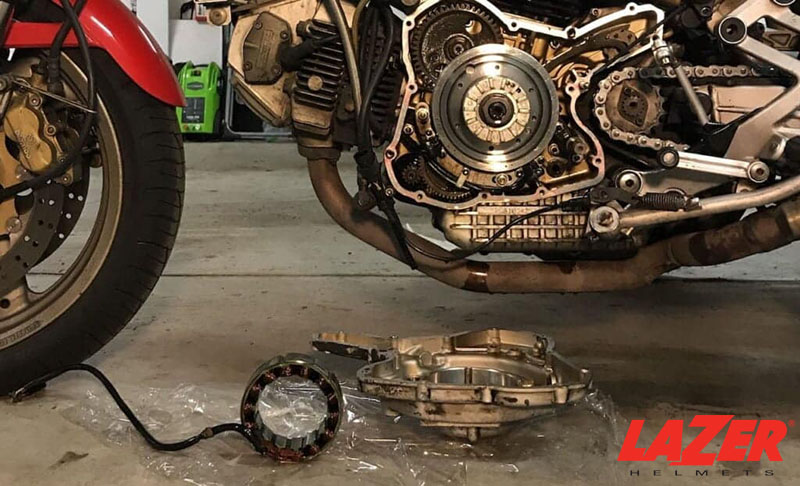
Most stators enjoy round shapes with metal wheels and coils. Like rotors, there are also electromagnets installed – though in opposite patterns.
You can imagine they work in rotors and stators exactly like how similar-polarity magnets repel each other: as the stator’s magnetic field rotates, the rotor must follow it immediately.
Due to their impressive power delivery (even at low speeds), stators have become the standard for most bikes. And since their electricity currents are self-produced, motorcycle systems enjoy much lighter weight than trucks or cars.
The only drawback, though, is that they sometimes demand motorcycle batteries to generate decent power levels (quite inconvenient!).
2. Is Every Stator Coil The Same?
No. Motorcycles utilize different energy amounts, after all, meaning there’s no way their stators are identical.
Each stator must generate the right energy level for that specific bike model to leave enough room for variations. Torque and power differences between two-wheels and three-wheels (or tricycles) also influence how they work in different situations.
Furthermore, note that some stators produce AC energy just for ignitions, while others convert AC to DC for other bike usages. (ex: Computer igniting, lighting, and fuel injection use DC quite often).
Higher-end stators even include pulses or pickup coils – additional accessories mounted near the motors. They can detect crank angles and send their data to ignition computers, calculating the right timing for the spark plugs.
3. Types of Stators
a. Charging stators (12-18 poles)
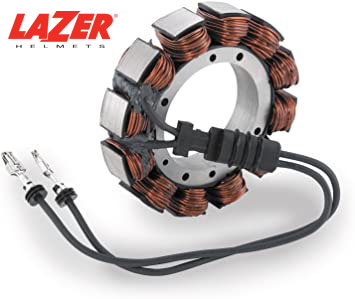
These charging stators far exceed the remaining options on our list in terms of popularity, often seen in most modern motorcycles. They only produce power for battery charges (though certain models also have attached pulses for more accurate ignition timing)
The products often contain round steel cores (12-18 arms/poles) evenly spaced around outer diameters. Insulated with epoxy coatings, these arms are designed to protect copper windings from the core’s shape edges.
At the same time, copper wires with high temp insulations are wrapped around every pole to generate charging coils afterward.
b. Single-phase and three-phase stators
Single-phase stators are straightforward since only 1 single coil is installed. You must wrap the wire in alternated counter-clockwise and clockwise circles around the device; otherwise, the flywheel’s opposite south/north magnets will cancel every produced current.
So how does it work? The EC generated quickly switches from positive polarity to negative once the motors turn, decreasing the current to near 0 every rotation.
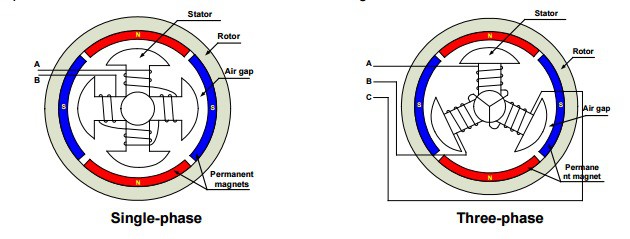
Three-phase stators work more or less similarly to single-phase, except there are 3 different coils wrapped in one direction around the device. Hence, when one coil nears 0, the other two still produce 75% of the power, ensuring the stator’s total output is never zero.
c. Inner/outer rotor/flywheel stators
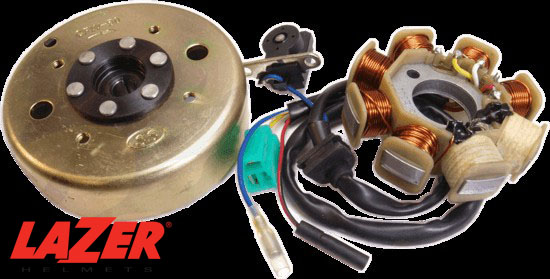
Some manufacturers design the stator’s magnets to connect the rotors inside or outside the circle.
How the shape turns out depends on rotor types and bike models. Yet, from our observation, most modern stators prefer outer-type flywheels, which cover the stators entirely and spin outside their diameters.
d. AC voltage igniting stators
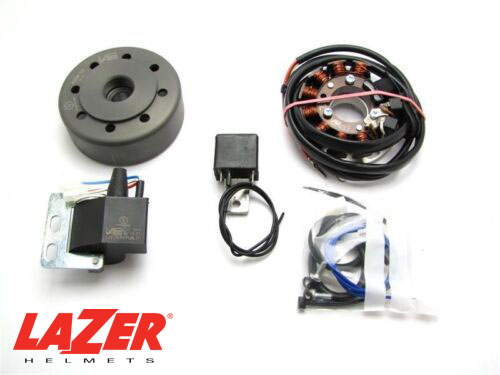
Dirt bikes, off-road motorbikes, and other vehicles for dual-sports and enduro use these stators (with special coils wounded) to power their ignition/electrical systems.
Sometimes, they also include coils for battery charges or light-system powering – but these cases are rare. Most of the time, there are only ignition-power coils involved.
One major benefit of such motorcycle stators? The ignition systems are self-powered and don’t need any volt battery support for rotation; as a result, many hassles and installation troubles are kept out of the way!
How To Recognize A Bad Motorcycle Stator?
We suggest buying high-quality, accurate multimeters to test faulty stators.
For stationary/static stators, inspect the wire’s resistance (with engines switched off). For dynamic ones, check their AC power readings (with engines turned on).
1. Stationary Stator Tests
If your engine/bike refuses to start, there’s no way you can turn on the engine. Hence, static tests will be the only option you have.
Assess the resistance levels in the collective wiring harness phases. Then measure each one individually against grounded surfaces and compare them with each other. Zero (or near zero) indicates potential issues.
2. Dynamic Stator Tests
Measure the stator’s voltage through every phase with the vehicle turned on. Each stator has different recommended voltage readings, so thoroughly consult the manual.
If necessary, rev up the engine. The multimeter’s results should increase accordingly; should they fail to do so, it’s time to change the stator.
FAQs
What Causes A Stator To Fail? What Happens If It Fails?
Mostly because of aging or wear and tear. Other triggers include:
- Not changing oil, oil filter, or coolant at their required service intervals
- Broken coating due to heat.
When it malfunctions, the engine will perform poorly owing to the weak spark.
How Much Does The Stator Cost?
About $4,000.
Is It Hard To Replace A Motorcycle Stator?
No. This simple task only necessitates heat-resistant silicone and a socket set.
Can A Motorcycle Run Without A Stator?
Impossible. Starting vehicles with bad stators already makes riders struggle, let alone NO stators at all!
Without stators, the bike will receive very weak spark – since the battery cannot supply the appropriate power amount to the engine. No energy, no current; your bike will be a dead course.
Do Motorcycles Have Alternators? How Do Stators Differ From Alternators?
For the first question: yes. In many bike models, stators are even a part of alternators.
So how do they differ? Stators are interior parts (always installed inside something) to produce AC, while alternators are self-contained devices responsible for DC generation. Also, stators utilize permanent magnet rotors, while motorbike alternators use electro ones.
Conclusion
Our guides have provided a full overview of a stator’s structure, mechanism, and purposes. A quick comparison of stator vs. alternator in motorcycles is also offered, ensuring you do not mistake or confuse the two types. Note down these pieces of information if necessary.
These stators are quite small and only play a minor part in the rotating system, so they demand less maintenance and cleaning than other electrical components.
Yet, that is not a cue for you to ignore them completely. Check them every once in a while (preferably every two weeks) to spot defects and malfunctions on time.

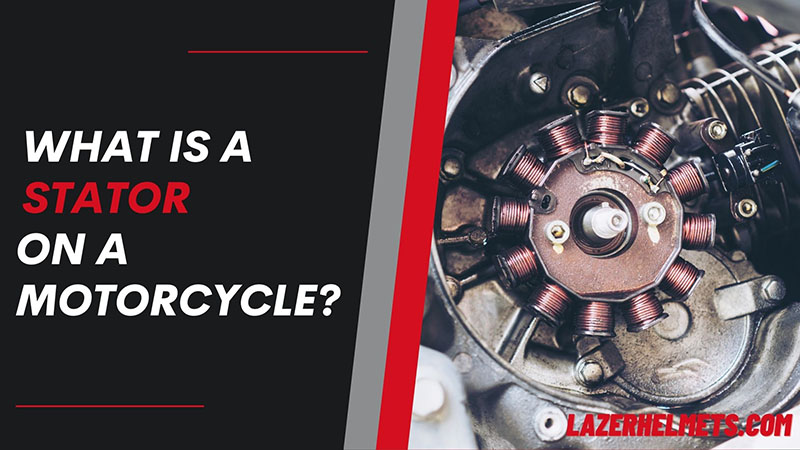

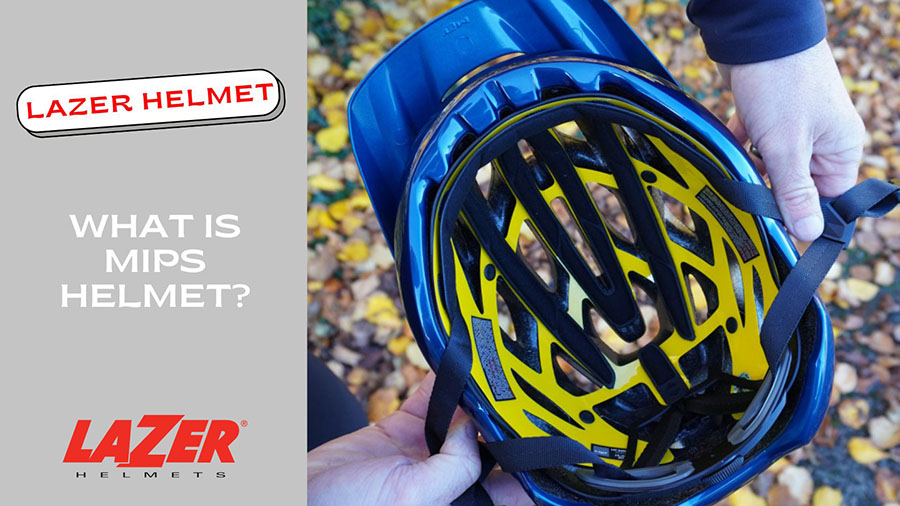
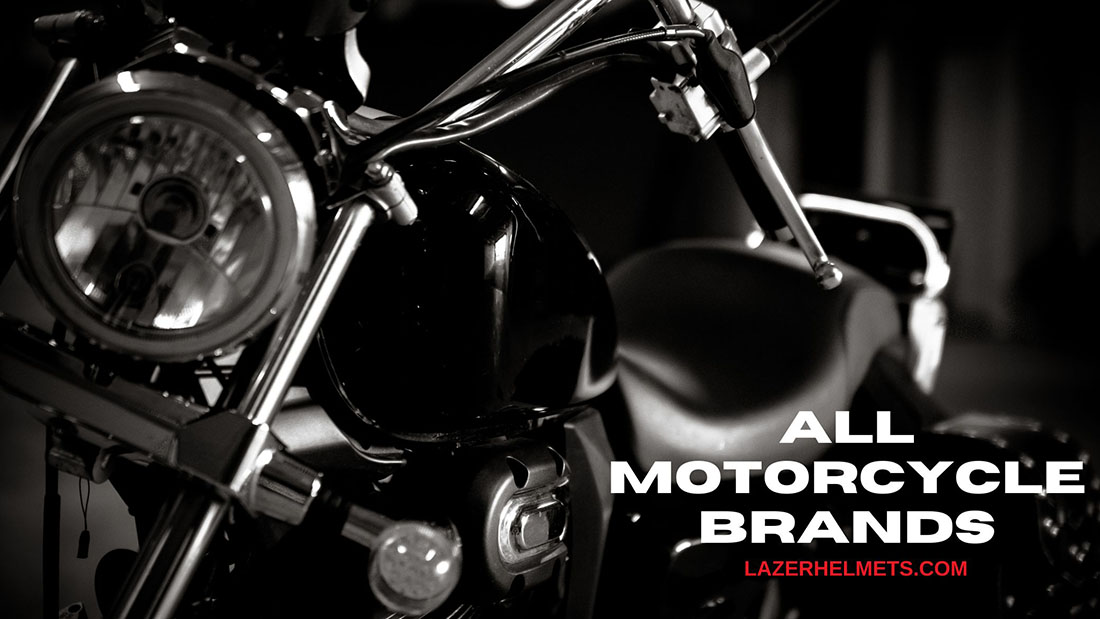
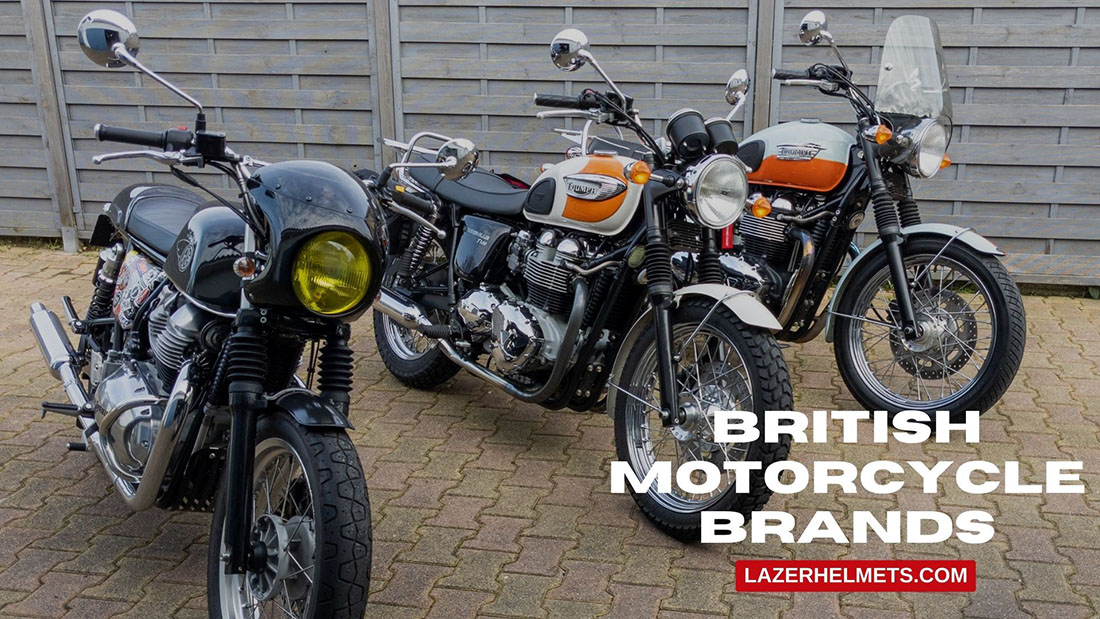
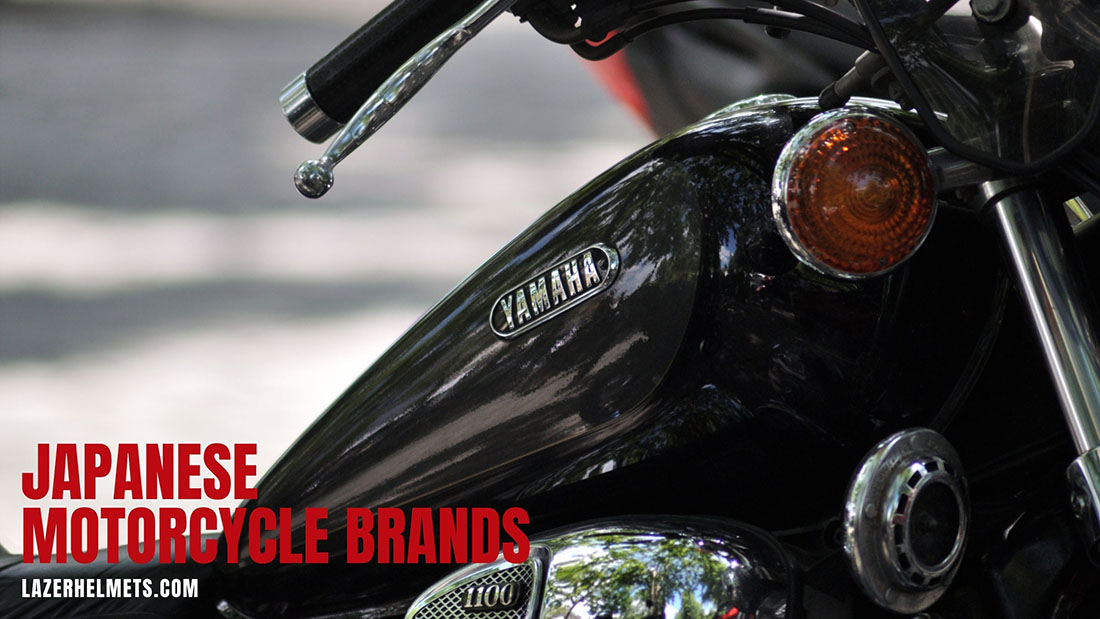
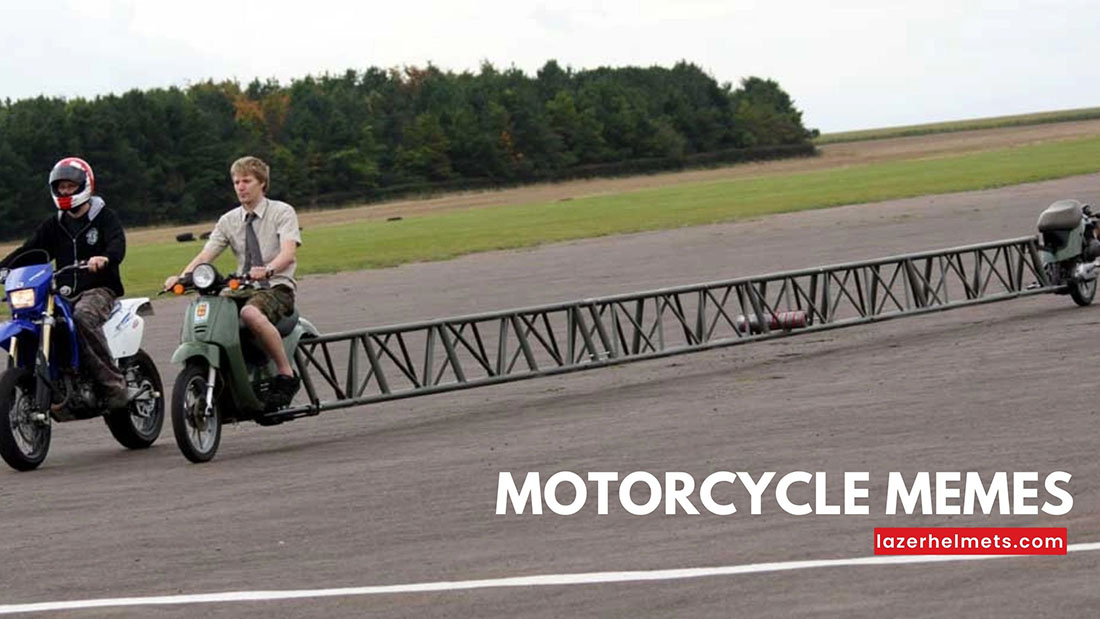

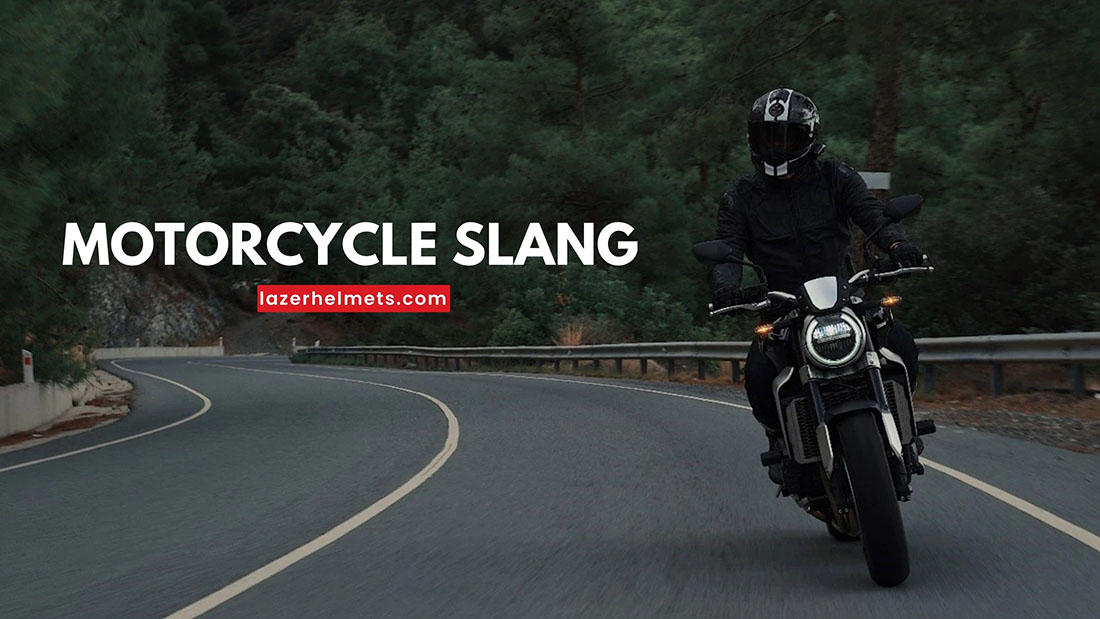
Thanks for information